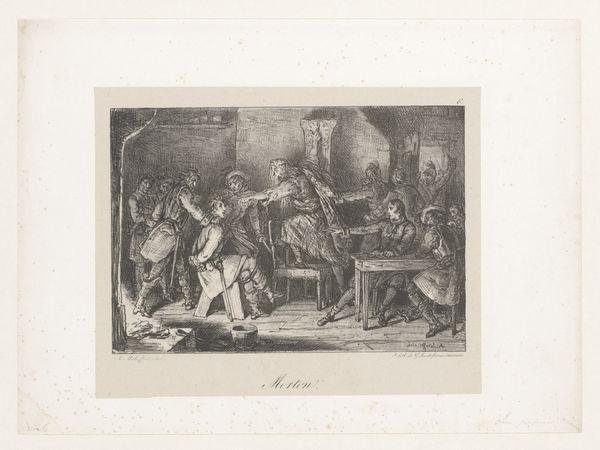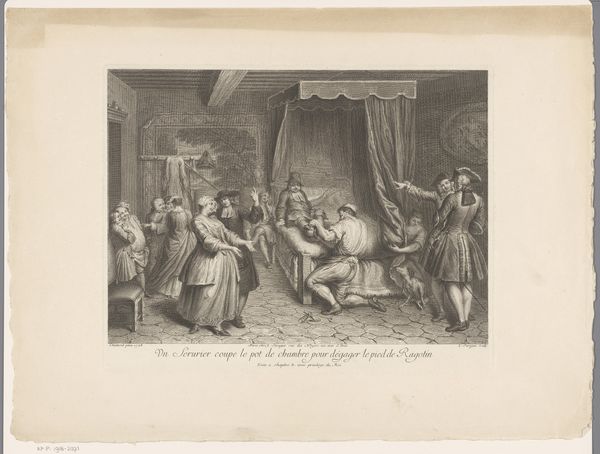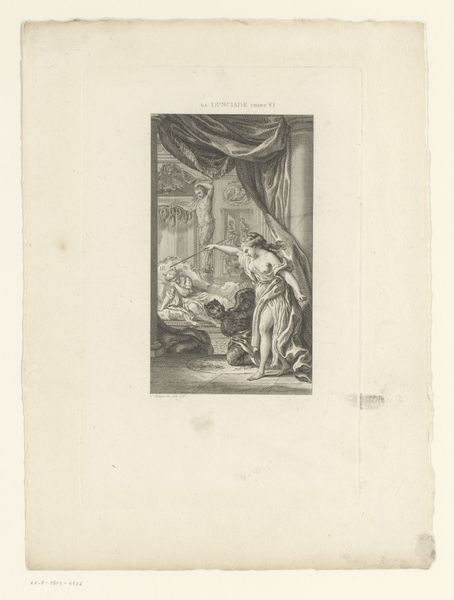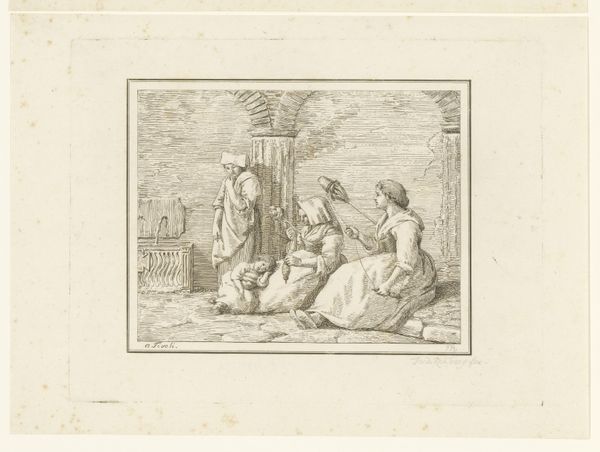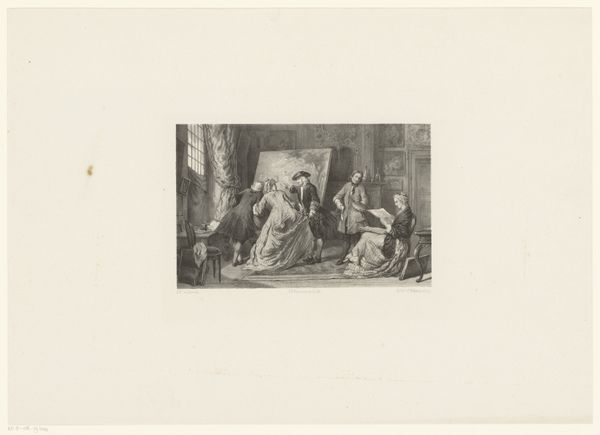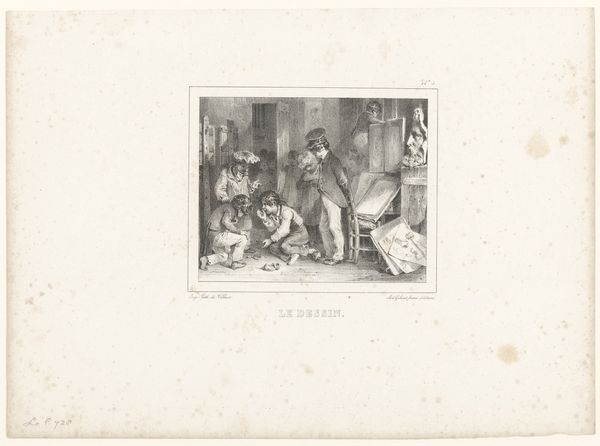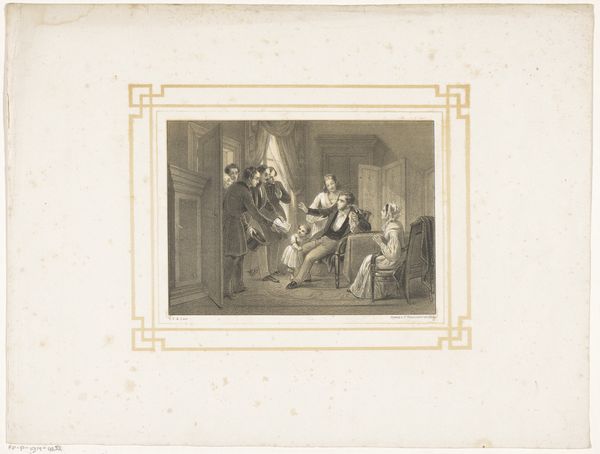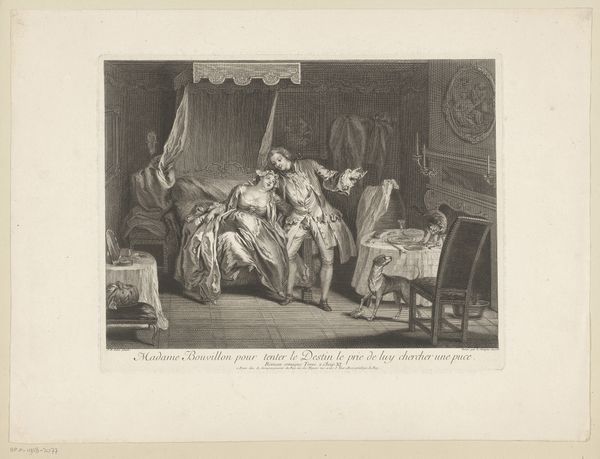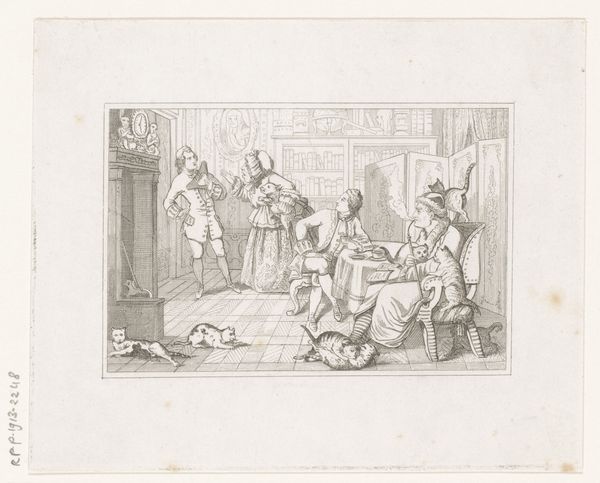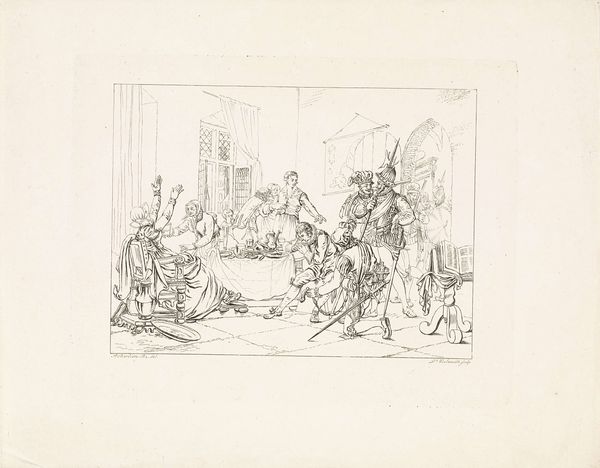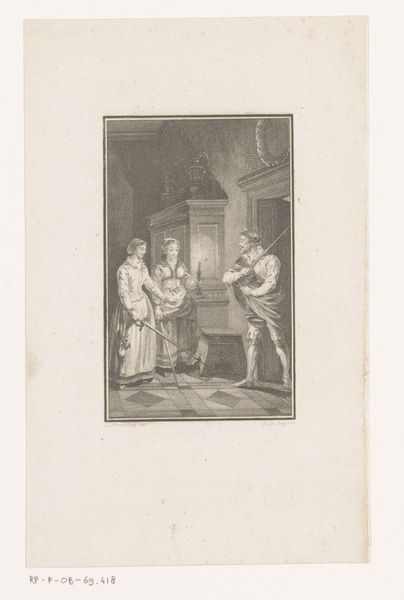
Man presenteert jonge vrouw aan man achteroverliggend in kussens 1743 - 1805
0:00
0:00
print, etching, intaglio, paper, engraving
#
neoclacissism
# print
#
etching
#
intaglio
#
figuration
#
paper
#
line
#
genre-painting
#
history-painting
#
engraving
Dimensions: height 84 mm, width 118 mm
Copyright: Rijks Museum: Open Domain
Curator: This etching is titled "Man presenteert jonge vrouw aan man achteroverliggend in kussens," or "Man presenting a young woman to a man reclining on cushions." It's an intaglio print, an engraving on paper by Johann Wilhelm Meil, dating roughly between 1743 and 1805, and seems to draw heavily on neoclassical themes. Editor: The scene feels…staged, doesn’t it? There’s an air of formality that’s quite distancing. Everyone is draped in cloth and the figures arranged like players on a stage. What sort of narrative do you read into the composition and positioning? Curator: Considering its likely period, it could reflect societal norms around gender and power dynamics. The reclining man has this dominating position, both physically and figuratively. This composition would also point to what could be a gendered exchange that excludes her agency. The positioning emphasizes the male gaze as active. Her figure, the "presented" woman is shown being introduced to his domain. Editor: Interesting. So, beyond just a generic historical context, how might we delve into those gender dynamics? She looks rather reluctant, wouldn't you agree? It challenges, at least to modern eyes, any sense of agency. And the seemingly ceremonial presentation…what’s that about? Curator: Exactly. Analyzing this from a feminist theory perspective, we might dissect her forced passivity. The composition, even the neoclassical aesthetic, supports systems where male authority dictate female existence. Her dress and how it falls across her limbs and waist, contrasted with the males could give voice to the power dynamics being explored. She appears trapped within their narrative and control, in my opinion. The way this history painting reduces her expression in her portrait reinforces that social inequity and objectification, it's her role, rather than her emotions being highlighted. Editor: Do you think the artist was making a social critique? How does the broader art historical context shape our interpretation? Genre painting allows room for that, though it is often interpreted as scenes of everyday life that have hidden symbolism about political themes. Curator: It's tough to be certain of Meil's intent without additional historical context on the original commission, the image is full of symbolism to unravel. However, understanding the social fabric of his time allows us to analyze it as an intersectional discourse. This could include commentary about power, class and, certainly, gender. Art provides a window, even in seemingly formalistic works like this. We, however, use modern social analysis tools to reinterpret its place in those systems. Editor: A valuable analysis. Thinking about its creation and distribution, prints often circulated images widely. This would mean the ideas presented here – about gender, class, or power dynamics as you said – would resonate widely in the European setting. A vital piece in the conversation! Curator: Indeed. And viewing it today with an activist's eye lets us acknowledge a history, continue its dialogue and work toward creating narratives based on justice and representation.
Comments
No comments
Be the first to comment and join the conversation on the ultimate creative platform.

